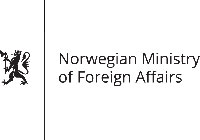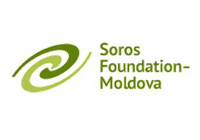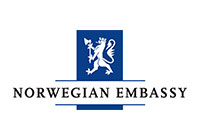.jpg)
The State Secretary of Defense, Valeriu Mija, spoke in an interview for the foreign policy newsletter about the plans of the Republic of Moldova regarding the army modernization. While for more than 30 years the military has been neglected due to lack of vision or carelessness, things are about to change in the current security context in the region. In the coming years, the Republic of Moldova will also benefit from a support of Eur 40 million from the EU to modernize in several strategic directions. We are inviting you to read more about this in the interview with Valeriu Mija:
Mr Mija, what is the Ministry's vision for reforming the national army? What is going to be the focus in this endeavour?
We have two documents guiding us. The first is the National Defense and Military Strategy from 2018 stipulating the risks, threats or realities. Based on them, in 2020, the Military Capabilities Plan of the National Army for 2030 was developed.
It should be mentioned also the vision of the Minister of Defense, Anatolie Nosatii, who took office in August 2021, according to whom the national army must be a mobile, modular, flexible and functional army. In other words, to be flexible and fast, the army should perform three basic functions.
And what are they?
State defense, emergency assistance to civilian authorities in crisis management, and participating in and contributing to international peacekeeping missions.
All these objectives of the reform process outlined by Minister Nosatii are intended to develop capabilities, along modern lines, so that the army is more mobile, faster and maintains the element of survival.
We would like to replace the heavy combat equipment inherited from the Soviet times by a lighter and more mobile one, but at the same time, we want to maintain the firepower. For example, we want to change the TABs on the 8x8 platforms, which are heavy and consume a lot. We have armoured infantry vehicles on rails that are very heavy too. We want to replace them with lighter and more mobile equipment such as IVECO or Humvee.
But as I said earlier, we would like to maintain the fire element, like increasing the anti-tank capabilities. This is a defensive element and the principle of sufficient defense is maintained throughout this conception. In the security dilemma, when building the army, we should not resort to increasing the number of soldiers.
Currently we have 6,500 soldiers and we want a maximum of 6,800 and about 2,000 civilians to remain as auxiliary personnel. We are going to modernize the army but not increase the personnel or technical ceiling.
Increased mobility
What does the modernization of the Soviet-style weaponry mean? What exactly will you do?
When it comes to modernization, we are talking about land and air transportation to raise mobility. We are also talking about the desire to have more mobile and faster logistics. We want to increase the anti-tank defensive capability. In this way we will increase the defense capacity and modernize the anti-aircraft defense.
We are talking about increasing the command-control and communications system. We want to move from analogue radio to digital systems which are more secure. In this way, we also increase cyber defense.
At the same time, we want to modernize the early warning capacity and our line of equipment such as drones, ground-based radars and optoelectronic devices that allow surveillance and detection of information in real time.
In which area and for which equipment will the EUR 40 million announced as aid from the EU be used? They spoke about non-lethal equipment, but is it about something else?
First of all I have to explain that there is equipment and weaponry. Because any gun is classified as a legal weapon. So, when we talk about lethal weaponry, it is weaponry that shoots gas, or tear gas, but which is rather used by the police. The military has conventional weapons of mass destruction, but we do not have such weapons. There is 100 mm calibre armament and slightly lower caliber armament.
In relation to the EU, we are discussing about equipment and not armament. These things are public and transparent. Allocating these resources, the EU manages them at the capacity we asked for. The cooperation programme with the EU is called the European Peace Facility. We received EUR 7 million in 2021 which was allocated for two projects: strengthening engineering capabilities and medical capacity.
And here I stated that the Republic of Moldova could help the post-conflict operation in Ukraine with engineering troops. Part of the capabilities will be redirected in this area.
In the discussions with the EU, we referred to mobility, the modernization of some 4x4 platforms. We discussed about enhancing logistics, early warning and cyber defense. Another project will be the modernization of the communications systems. The EUR 40 million will be allocated to these six segments. We very much hope that this programme will continue because certain capabilities form part of the modernization plans for the national army by 2030. Our hope is that we will continue and will do it in stages.
European money for modernization
The EU assistance of EUR 40 million has sparked reactions in Tiraspol according to which a modernization of the Moldovan army would affect the security of the separatist region. What is your opinion about such statements and will you continue on the path of the proposed modernization?
These statements from Tiraspol is a reaction to the statements from about two months ago by the US Secretary of State Anthony Blinken and British Foreign Minister Liz Truss that these countries would be prepared to provide lethal weapons according to the needs of the Republic of Moldova. That was a political signal at the time.
It is possible that Tiraspol got inflamed by the fact that the Republic of Moldova was included in the final declaration of the recent NATO Summit in Madrid followed by the announcement of the European Council that it would offer EUR 40 million for the defense of the country. We know that the annual budget of the Ministry of Defense is USD 50 million and that it is difficult currently for Moldova to increase the budget.
That is why we are turning to these bilateral and international partnerships, precisely to modernize the defense capabilities. However, we are not talking about armament and about increasing the military equipment or troop numbers. Furthermore, our plans are to replace the heavy machinery with a light one. This is the difference.
Interoperability for external missions
How are joint military exercises with Western partners going and could we also talk a little bit about interoperability with such armies as well?
The joint military exercises are taking place according to our plans. They aim at interoperability and other goals. The exercises were planned several years ago and are carried out according to a predetermined schedule in order to achieve constructive goals.
We are talking here about participating in joint missions to maintain regional stability or contributing to regional security. Our servicemen are now participating in the peacekeeping mission in Kosovo, but are preparing to leave soon for similar missions in Lebanon. In February next year, this contingent will be deployed in Lebanon.
For this we must have a high degree of interoperability in procedure, but also in terms of military technique and equipment. We have old equipment inherited from the times of the USSR, being produced in the 60s - 70s.
If we talk about the joint exercises with the Romanian army, they are very good and useful because we get the experience of communication and interaction, given the fact that Romania passed through modernization and transformation faster as a member of the EU and NATO. It is a transformed army. The fact that we are neighbours, speak the same language, and have the same mentality makes it much easier for the interoperability between armies.
We always appeal to the authorities in Romania to develop more joint projects because we can implement them more quickly later.
Thank you!
Comments
Donors:






Partners:









